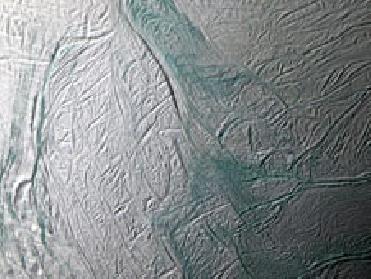
TUSCAN, Arizona (BNS): NASA's Phoenix Mars Lander's Atomic Force Microscope has been successful in collecting a digital sample of Martian dust particle. According to the image, the particle, shown at higher magnification than anything ever seen from another world, is a rounded particle about one micrometer, or one millionth of a meter, across. It is a small particle of dust that cloaks Mars. Scientists say that such dust particles colour the Martian sky pink, feed storms that regularly envelop the planet and produce Mars' distinctive red soil.
Phoenix co-investigator, Urs Staufer of the University of Neuchatel, Switzerland, said that this was the first picture of a clay-sized particle on Mars, and the size agrees with predictions from the colours seen in sunsets on the Red Planet.
Another Phoenix science team member from Imperial College London, Tom Pike said, "Taking this image required the highest resolution microscope operated off Earth and a specially designed substrate to hold the Martian dust. We always knew it was going to be technically very challenging to image particles this small."
Staufer, who also leads a Swiss consortium that made the microscope said, "I'm delighted that this microscope is producing images that will help us understand Mars at the highest detail ever. This is proof of the microscope's potential. We are now ready to start doing scientific experiments that will add a new dimension to measurements being made by other Phoenix lander instruments."
On a note of positive excitement, Pike, whose group at Imperial College produced these silicon microdiscs, added that after this first success, they were now working on building up a portrait gallery of the dust on Mars.
Researchers� state that understanding Mars' environment is important and it is possible by studying the ultra-fine dust that actively links gases in the Martian atmosphere to processes in Martian soil.
The robotic arm from the �Snow White� scooped the particle seen in the atomic force microscope image in early July and sent it to Phoenix�s microscope station. Among other things at the microscope station, include the optical microscope, atomic force microscope and sample delivery wheel, which are a part of a suite of tools called Phoenix's Microscopy, Electrochemistry and Conductivity Analyzer.
Peter Smith from the University of Arizona leads the Phoenix mission based at NASA's Jet Propulsion Laboratory, Pasadena, Calif, in joint collaboration at Lockheed Martin, Denver. Canadian Space Agency; the University of Neuchatel; the universities of Copenhagen and Aarhus in Denmark; the Max Planck Institute in Germany; and the Finnish Meteorological Institute also contribute to the project. The California Institute of Technology in Pasadena manages JPL for NASA.
 Previous Article
Previous Article












The Indian Air Force, in its flight trials evaluation report submitted before the Defence Ministry l..
view articleAn insight into the Medium Multi-Role Combat Aircraft competition...
view articleSky enthusiasts can now spot the International Space Station (ISS) commanded by Indian-American astr..
view article